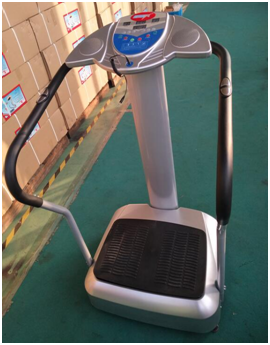The first section of the pre-coated photosensitive lithography (PS version) Introduction Pre-coated photosensitive lithography refers to the photosensitive adhesive pre-coated on a metal plate, and stored in the dark, you can print the plate at any time, referred to as "PS version" ( Abbreviation for Presensitized Plates).
PS version is a new type of flat plate material, with commercial storage (shelf life is about one year); easy to use, high resolution, good printability, high resistance to printing force, pollution-free characteristics.
The PS version has a wide range of types, and is generally classified into a positive type (P type) and a negative type (N type) according to imaging performance. In the 1930s, Kaller first invented the PS version. The base of the plate was saponified cellulose acetate base and paper base. Because of the poor resistance to print force and dimensional stability, this base is now only used for small offset printing plates.
In the late 1950s, there appeared the PS version of metal sand. It uses mechanical grinding (ball milling, brush grinding, sandblasting, etc.) and chemical milling (electrolytic method) to form a sand mesh on the surface of 0.1-0.6 mm thick aluminum sheet. as the picture shows.
The application of sand technology has improved the water retention of aluminum plates with good hydrophilicity. Later, anodizing treatment technology emerged, which is the use of electrochemical methods to form a 2um thick artificial aluminum oxide layer on the surface of the aluminum plate to improve the printing plate resistance to printing.
Aluminium plates are produced using a continuous automatic production line, as shown in the figure. The sealing process is to close or semi-close the micropores of the oxide layer in order to increase the resistance to oxidation and acidity of the oxide layer and reduce the adsorption of the oxide layer. In the case of a diazido type positive-acting PS plate using a weak alkaline sodium citrate developer, this process can be omitted.
Section II: Imposition process The flatwork workshop receives the project sheet. If the film is required to be arranged according to the requirements of the project sheet, if it is found that the film does not meet the requirements of the project sheet, report it promptly;
The details of film finishing are as follows:
(1) Write color and page number (Note: You need to write one sheet to get one sheet. You must not write four-color sheets together. All the films need to be written in color; single-gram, two-color, and three-color films are required).
(2) Draw a blue line with a blue ballpoint pen at the red head position, and make a bottom plate.
(3) Sticky double-sided adhesive tape on the edge and head (Note: Do not stick into the finished product or within the bleeding area).
(4) Disciplining the film according to the requirements of the project.
(5) Separation and scrubbing Clean the film. Use crepe paper to stick each color and write the number of posts (Note: The last IP film must be inward for each post). After finishing the film, you can begin to open the grid, and the imposition will open a grid according to the requirements of the project. The team leader can review after making a review. The sequence of steps for the blue imposition process is:
(1) fight KM version;
(2) Blue print;
(3) Develop with ammonia;
(4) Blue sample inspection:
A. Is the page number correct, with or without reversal, missing numbers, clear content, and no pollution?
B. Whether the brow is flush with the book;
C, incision bleeding more than 3mm;
D. Whether the head or the foot meets the customer's requirements;
E, the size is consistent with the book size F imposition format.
The details of the step-by-step operations of the imposition process on the machine are as follows:
(1) Add crosshairs, signature code (book spine between the maximum and minimum number of pages per book; book titles in the minimum page number bleeding head).
(2) Check if there is a long edge, inner dust, dislocation, reverse spelling.
(3) When marking the mouth (4) adhesive paper, the edge of the tape needs to be separated from the edge of the screen by 3mm. If the adhesive paper cannot be glued, the full version of the glue is required.
(5) After the four colors are completed, four colors need to be stacked to check and register, and each color must be checked for misspelling or reverse spelling, film and Longbian; whether Ashtron is to be bent. The spelled version is checked by the team leader and printed in the printing group (lithographic plate).
The third quarter plate-making (stencil printing) process One, the most typical positive-plane PS plate sensitizer used in the positive-plate version of the PS plate is an ortho-diazonium compound.
The plate-making steps of Yang Tu's PS version mainly include:
Exposure and Development Correction Coating Drying Inspection (1) Exposure The positive-type PS plate is a photo-dissipation type photosensitive plate. Except for exposure, the entire process of plate making should be protected from bright light, and yellow fluorescent lamps should be used as illumination lamps. (to be continued)
It is seldom can see it in the markets , but it is also popular in some smaller countries . The best difference is it has big music equipment with 2 loudspeakers in the operation display screen . PLS see the picture . It is also have a equipment for insert the MP3 /MP4/MP5 , etc . When do sports on the machine , you also can listen the music . When do sports ,you also can enjoy the entertainment together . It is a magical new fitness Vibration Machine in the world . It is a Body Shaker Vibration Machine .You also can add your own company logo in the operation display screen .

Magical Vibration Machine,Body Shaker Vibration Machine,Bluetooth Vibration Plate Machine,Vibration Machine With Mp3
ZHEJIANG MEIER FITNESS EQUIPMENT CO., LTD , http://www.chinameier.com